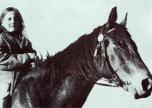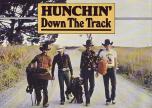Saving Tuna
27/10/2012New Zealand
About
Revealing the extraordinary life-cycle of the longfin eel (tuna), its legendary history among Māori tribes, and the passion and hard-work by iwi and individuals to help the threatened eel survive and thrive!
He may be a slippery character, but the longfin eel (tuna) now needs human help to escape from a deadly trap. The Pakipūmekadocumentary Saving Tuna reveals the extraordinary life-cycle of the charismatic longfin eel, now a threatened species.
During filming for Saving Tuna, the production team journeyed around the motu from Lake Ellesmere in Canterbury to Moerewa - fondly referred to as ‘Tuna Town’ - in Te Tai Tokerau. Along the way, they met many iwi for whom the tuna has a huge historical significance.

'It’s an awesome fish’ says co-producer Gary Scott, ‘so the first time you learn the eel story, you get hooked. Which is what inspired us to start the production.’
‘Eels live as long as humans, up to a hundred years and more, and can grow to enormous size. But they only breed once, in a mysterious location in the Pacific, and then they die.’
The journey the young eels make, from the ocean depths near Tonga to the mountainous headwaters of New Zealand’s rivers, is an extraordinary feat of endurance and navigation.
Tuna is a listed in tribal whakapapa stretching back to Ranginui and Paptauanuku, and many tribes tell of Tuna’s ancient battle with Maui. Eels were an important food source for most iwi, who dried and preserved them in large quantities during the annual tunaheke (migration).
However, the eel’s survival is now severely threatened with the longfin population decreasing significantly after overfishing in the 70s, pollution of waterways, draining of swamps and damming of rivers. Scott says Saving Tuna looks closely at how the tuna is being affected and why. And how iwi are regenerating their old friend the tuna.
‘There are some real Maori heroes out there, doing the hard yards to save the eel.’
Like kaitiaki Bill Kerrison, who continues a crucial 30 year-old catch and release programme rebuilding tuna stocks on the Rangitaiki from Murupara to the Whakatane coast. Ngāti Awa tikanga expert Pouroto Ngaropo talks about the reverence that tribes have for the eel as tipua and mokai (ancestors and pets), while John Hohapata-Oke is establishing the National Eel Association and predicts the end of commercial harvests in the wild. The documentary also highlights a new computer game about the life-cycle of the longfin, designed by Ian Ruru in Gisborne.
In Northland, Ngāti Hine’s Tohe Ashby reveals how the eel inspired the design of the legendary Ruapekapeka pa during the land wars, while Millan Ruka patrols the rivers, and in Whanganui Ben Potaka describes the building and destruction of enormous mid-river eel traps – the amazing pā tuna.
The ‘eel wars’ of Wairarapa are described by Paora Ammunson, along with its effects on Wairarapa marae.
A wananga held at Taumutu Marae on the shores of Lake Ellesmere is another highlight of the programme, as this ‘kete ika’ (fish basket) has such a strong eel-harvesting tradition.
The documentary was produced by the Gibson Group with the help of co-producer Fiona Apanui-Kupenga. It was directed by Wellington director Emily McDowell.
Technical Specifications
TV Production
1 x 60 min documentary aired 27th October 2012


















